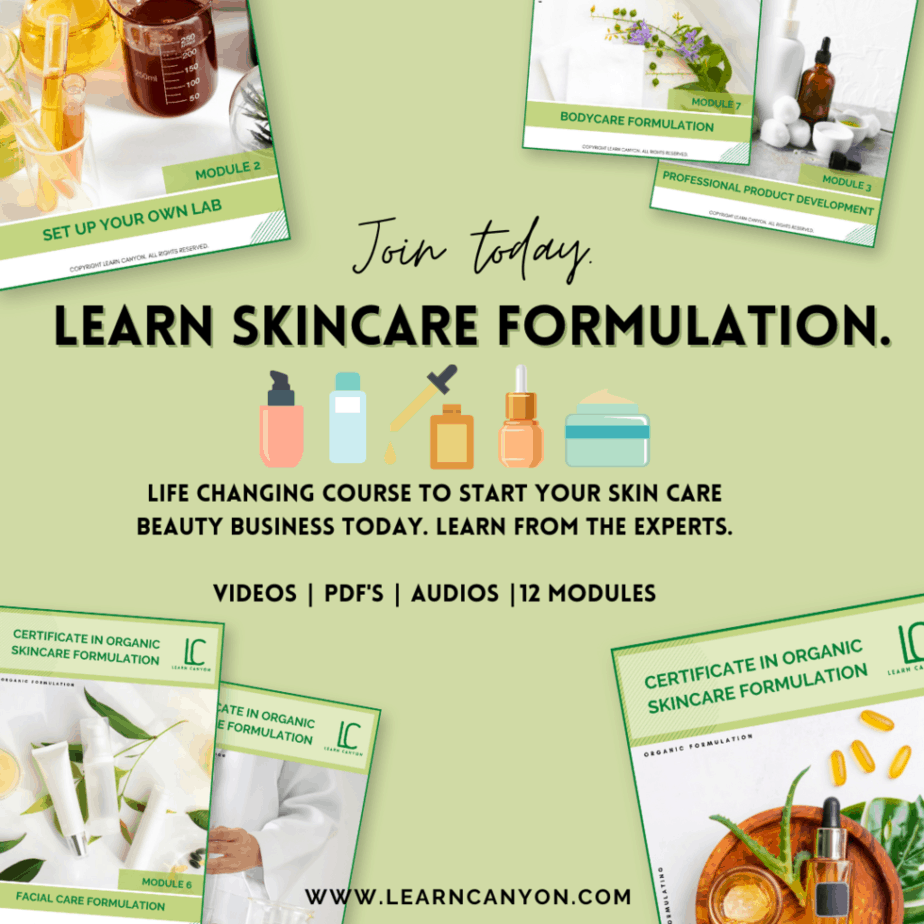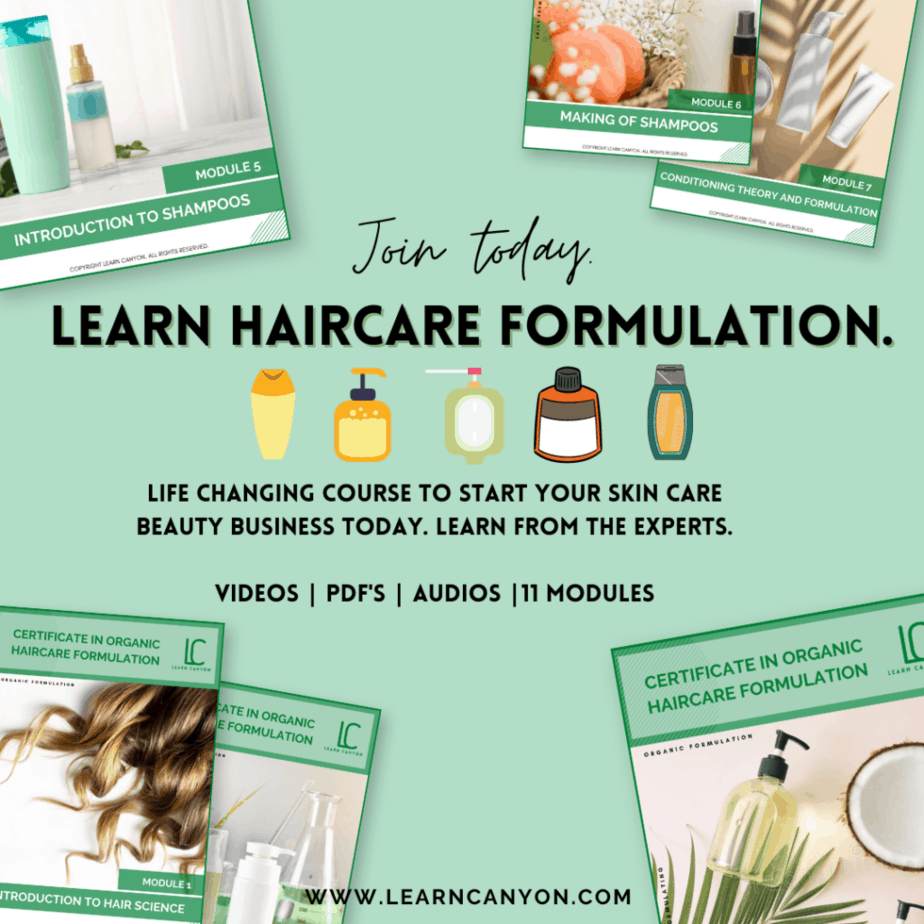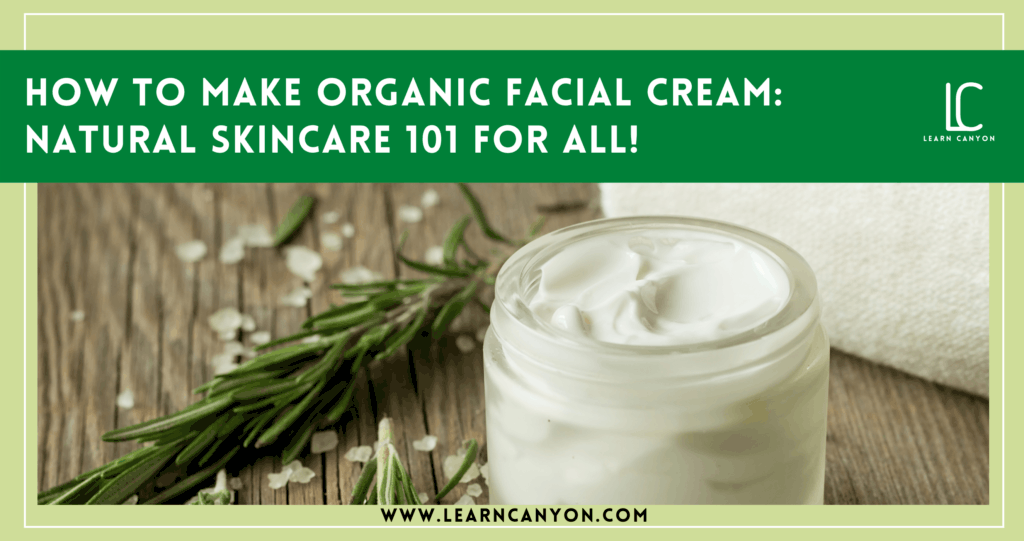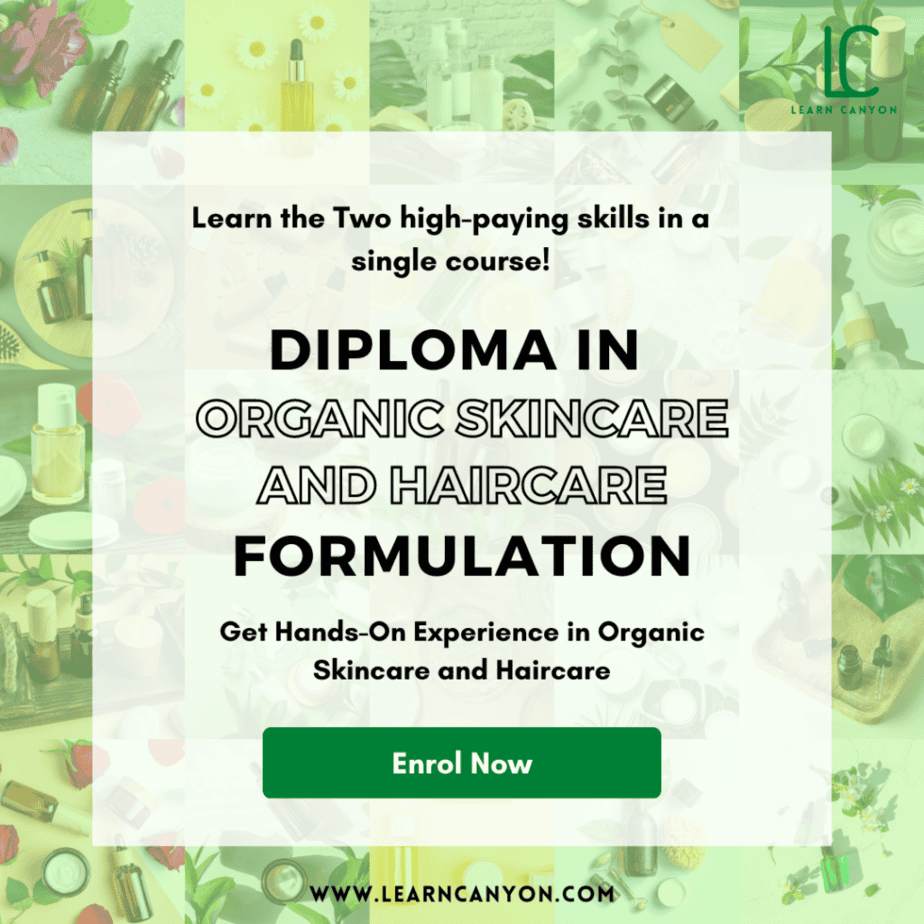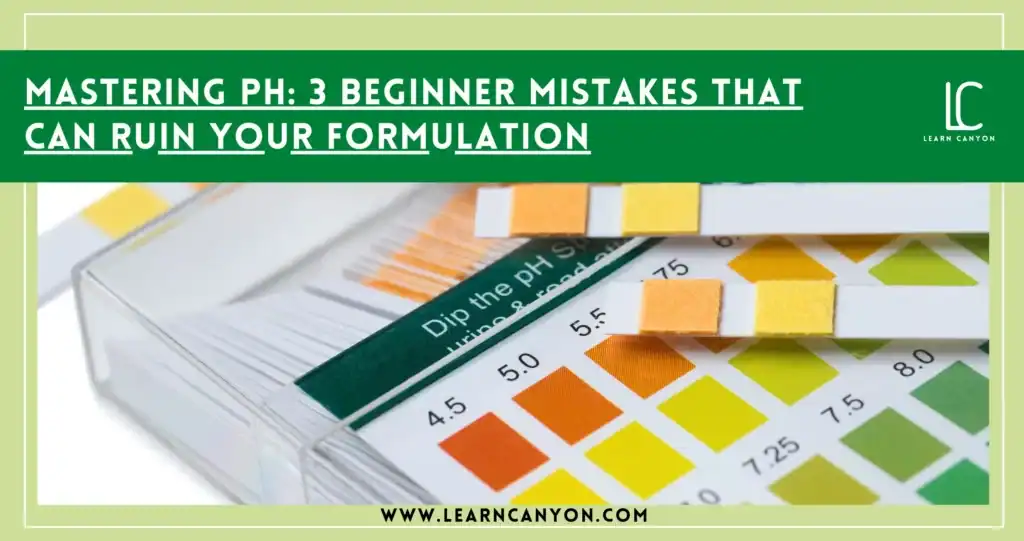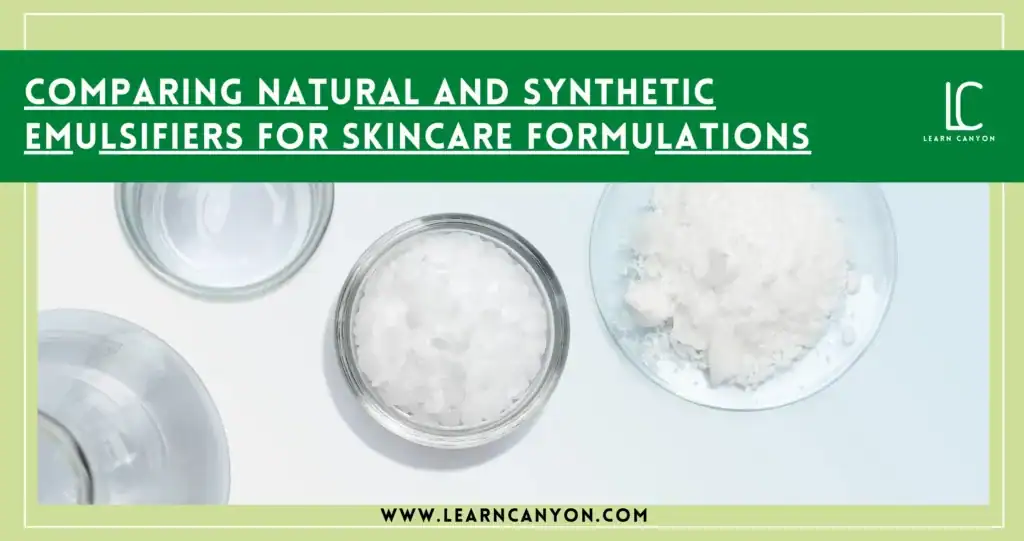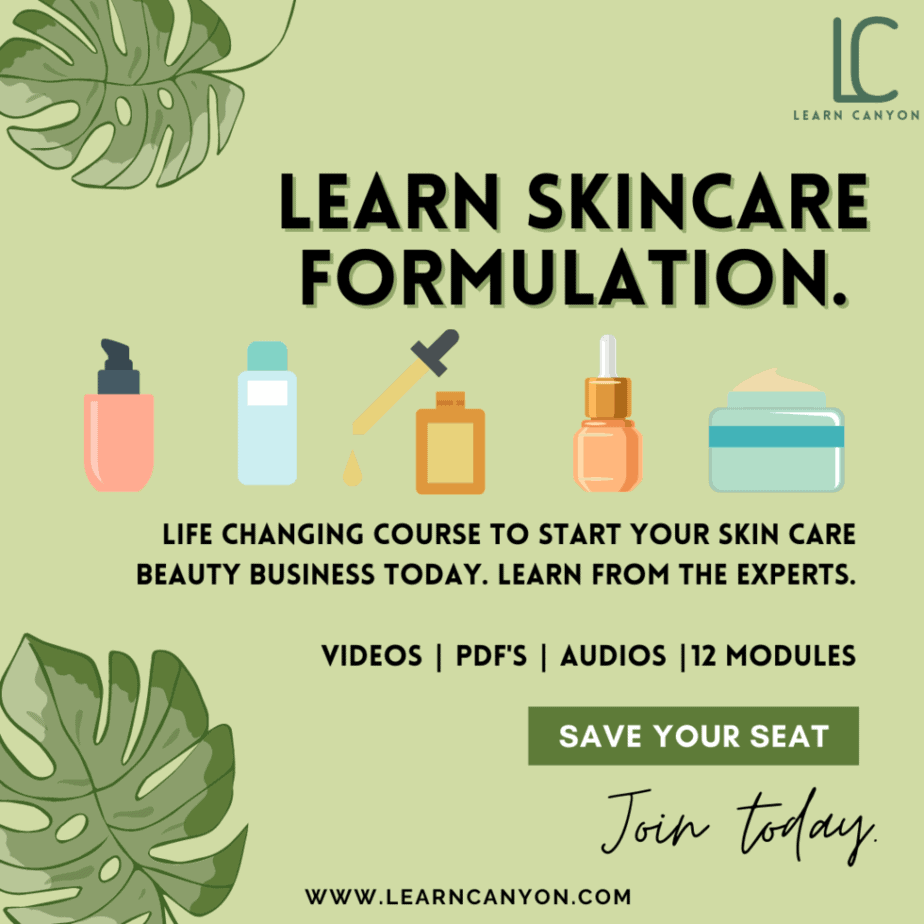When you go out to buy a face cream or surf online stores, you will find at least a thousand options that will leave you all confused.
And if you do end up buying the products, there is no guarantee of satisfaction.
In this case, wouldn’t it be lovely if you could just blend up your own organic facial cream? And not just any DIY cream, but a professional one! Sounds interesting?
Well then read further to all about how to make organic facial cream.

Why do you need organic facial creams?
Before learning how to make organic facial cream, you need to learn what is the need for organic and natural skincare! It’s 2021- it is a fact that chemicals have made their way into every aspect of our lives.
They are present in food, drinks, cleaning agents, everything! So obviously they are present in skincare products.
And where there are chemicals, there is no ‘care’, nor for your skin neither for the environment. You may want to have a look at these reasons as to why you need organic facial creams, or better yet, organic skincare.

They are better for the environment
It is high time that we think about the environment now. The chemicals used in skincare products harm the animals and plants directly and indirectly.
The waste produced by the industries goes into the water bodies and hence disturbs the aquatic life as well.
Natural ingredients are derived from nature, and hence do not cause any harm.
Natural ingredients are safer
When compared to synthetic skin care products, natural skincare products are much safer. The ingredients contained within natural products are safer than the products made in the industries.
When any cream, lotion, moisturizer is applied to the skin, it seeps through the pores. It causes harm and affects the natural processes of the body.
Hence, it is obvious that natural ingredients will have a positive effect on the body. Since these ingredients are derived from Earth, they leave you feeling better and looking better.
They are packed with nutrients
Have you ever looked at the label of your cosmetic or skincare products? The ingredients listed there will make you believe why you need to know how to make organic facial creams.
What sounds better? The words such as Triclosan, Sodium Laurel Sulfate, Glyceryl Stearate, and Petrolatum or words like argan oil, jojoba oil, aloe vera, lemon juice?
Obviously the second set of words!! They are more beneficial because they already contain the elements required by our body and nothing more!
They are easier on the skin
The products made in the lab using chemicals are very harsh on the skin. They pull out all the moisture from the skin, leaving it dry and itchy.
Even moisturizers which contain chemicals are not that efficient in the long run.
On the other hand, organic and natural products contain ingredients that are soft on the skin. They make it plumper and make it glow!

Organic facial creams: the various types
We hope we gave you enough reasons to try out organic facial creams. But before you learn how to make organic facial creams professionally, you need to know their different types. There are three of them:
Gel creams
Gel creams are water-based creams that are lightweight in texture and easily absorbed into the skin. They contain fewer oils than moisturizers that are cream-based.
The absence of oil in gel creams makes them suitable for oily as well as combination skin. This is obviously because they do not add any extra oil to the skin.
They moisturize and hydrate it without leaving any residue. Many gel creams are formulated with hyaluronic acid which deeply hydrates skin.
Anhydrous creams
It is a big word yes. But anhydrous simply means the absence of water. Though water is used as a base or an additive, it decreases the shelf life of the product.
And in turn, preservatives have to be added which becomes questionable.
Also, as the water in the products evaporates, it leaves the skin dry and itchy.
So, that is why anhydrous creams do not use water as a base or additive. They are self-preserving.
Also, removing the water can produce highly concentrated formulations, meaning you’ll have to use less of the facial cream but the oomph factor remains the same!!
In your quest to learn how to make organic facial cream, you must know what base to use and when.
Emulsified creams
In layman’s words, emulsions are lighter versions of moisturizing creams. They are typically water-based, which means they go on lighter and thinner than creams.
Emulsions absorb into the skin much more quickly and don’t tend to sit on top of the skin as some creams do.
Emulsified creams offer almost the same benefits as a cream, just in a lighter formula.
They’re formulated to act as a moisture lock that locks in all the hydration and benefits of your essence and serums.
To avoid overload of information, we have summarized the types of facial creams for you.
If you are interested in learning more about organic facial creams, their types, and want to study them in-depth, refer to the Certificate in Organic Skincare Course.
Learn about this course in detail in the next section.

What skill set is required to make organic facial cream?
The only skill set you need is: Interest. A keen interest in organic skincare and the zeal to take the power back into your hands!
That’s it! Organic skincare is thriving in today’s world and ready to take onto the industry since people are now realizing that it is the way to go!
All you need is a little professional guidance. And that guidance will be provided to you in the Certificate in Organic Skincare Course.
All you have to do is tap into your inner student and lead its way to become an organic skincare entrepreneur.
This course will help you to:
- Learn about natural ingredients, their uses and benefits, and how they react to different skin types
- Become an expert in skincare science. Learn about the structure of the skin, different skin types, and how to formulate organic products based on it.
- Understand what threatens the skin and how to be aware of those triggers. You can be aware yourself as well help others to understand their skin better.
- Establish a small lab with accurate equipment, learn to grow, harvest, and extract ingredients. Also, learn to utilize the equipment in the lab to your benefit.
- Learn to select the right ingredients for the formulations according to the skin type.
- Understand how to make formulations for face, body, and hair without toxic chemicals
- Learn about the textures of the formulations and accordingly how to make gels, creams, emulsions, etc
- Understand the shelf life of the products you make and learn how to make them last longer, and hence the use of natural preservatives
- Create amazing spa treatment products like polishes, masks, and oils.
So in addition to learning how to make organic facial cream, you can learn EVERYTHING about skincare easily and at your own pace with one-on-one guidance!


